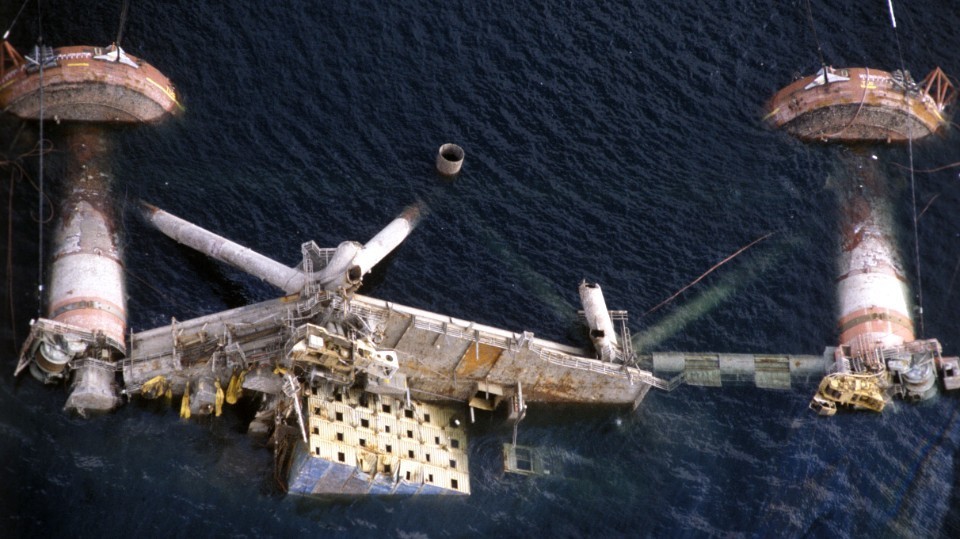The Weekly Reflektion 25/2025
The world of politics and the world of science are different and consequently have different rules of engagement when there are disagreements. In our Reflektion in week 23/2025, we talked about the plan to phase out Germany’s nuclear power stations before and after the Fukushima Daiichi nuclear disaster in Japan in March 2011. This week we will talk about how the scientific view can be overturned by disinformation, appeal to the emotions and bypassing of the legal process.

Does the end really justify the means?
The Alexander L. Kielland disaster on 27th March 1980, claimed the lives of 123 and was a national tragedy. The investigation into the disaster found that a weld on a hydrophone on one of the braces (D-6) failed and initiated a crack in the brace itself. This crack extended due to fatigue and the brace failed. The rig was not designed for loss of any one of the five legs, and it heeled over and capsized after 20 minutes. The investigation was thorough, and the report was the subject of a detailed review process. The weld in question was incorrectly specified for the application and poorly carried out by the manufacturer of the brace.
Alternative explanations for the causes, and conspiration theories that information on the disaster had been covered up, started already in 1981. There have been several processes that reviewed and refuted these explanations and theories the latest being a review of the disaster by the Norwegian Auditor General in 2021. In a court case related to the disaster in Stavanger in 1986, the judge concluded that the French yard that build the rig were responsible for the disaster due to the failure to ensure the hydrophone was designed and installed correctly.
Historians at the University of Stavanger (UiS) have been promoting alternative explanations and conspiration theories on the Kielland disaster since 2016. They recently carried out an empirical investigation that concluded that the state was responsible for causing the accident. The report from UiS contains many factual errors, misrepresents important information on the disaster, and promotes a false narrative of the causes and responsibilities of the parties involved. The report, however, was taken onboard by the Kielland network that represents some of the next of kin and survivors. They received support from some politicians in the Norwegian Parliament and the report became an important basis for a proposal to seek compensation from the state. Following a process in the Labour and Social Affairs Committee, Parliament voted in favour of a compensation scheme in June 2025. It should be noted that the next of kin and survivors had already received compensation in accordance with Norwegian Law in 1981. It is reassuring that Parliament did not automatically accept the conclusions from the UiS report and have recommended that the state’s responsibility for the accident is independently reviewedbefore the details on the compensation scheme are decided.
In 1980, it was the Norwegian Petroleum Directorate (NPD) that was the authority with the overall responsibility for safety in the Greater Ekofisk Area where the rig was operating. The Norwegian Maritime Authority (NMA) had regulatory responsibility for the rig’s design and operation including auditing of the shipping company to ensure the regulations were being complied with. The roles of these authorities are similar today. It is effectively the NPD and NMA that are now accused of being responsible for the Kielland accident and the loss of 123 of the 212 onboard. Based on the evidence it seems unlikely that the blame for the Kielland disaster can be attributed to the regulatory authorities. There are also precedents from other accidents, for example the M/V Rocknesaccident in 2004, that indicate that this would have been the conclusion if the case for the states responsibility for the Kielland disaster had been tried in a court where evidence for and against is scrutinized properly.
The state’s authority and liability in connection with a major accident is assessed by the police. The prosecuting authority assesses whether the state acted negligently or intentionally. If there are grounds, then the case is then tried in the legal system. The Kielland disaster was investigated by the police in 1980/81, and the prosecuting authority found no grounds to hold the relevant authorities in Norway responsible for the disaster. This has been completely turned on its head by the UiS report. It is concerning that many of the Norwegian Members of Parliament accepted the UiS conclusions even though the report has not been quality assured and peer reviewed. As noted in the introduction, the rules of engagement in scientific and political matters are different. Science relies on the assessment of evidence and objective reasoning to reach a conclusion. Politics is about emotions and compelling narratives to promote an agenda. The truth is fluid, and any deviations are acceptable as long as it serves a greater purpose. Politics is of course also about securing votes in the upcoming Norwegian General Election.
The independent review of the report from the University of Stavanger should be complete by the end of 2025. Hopefully a scientific approach will be applied.
